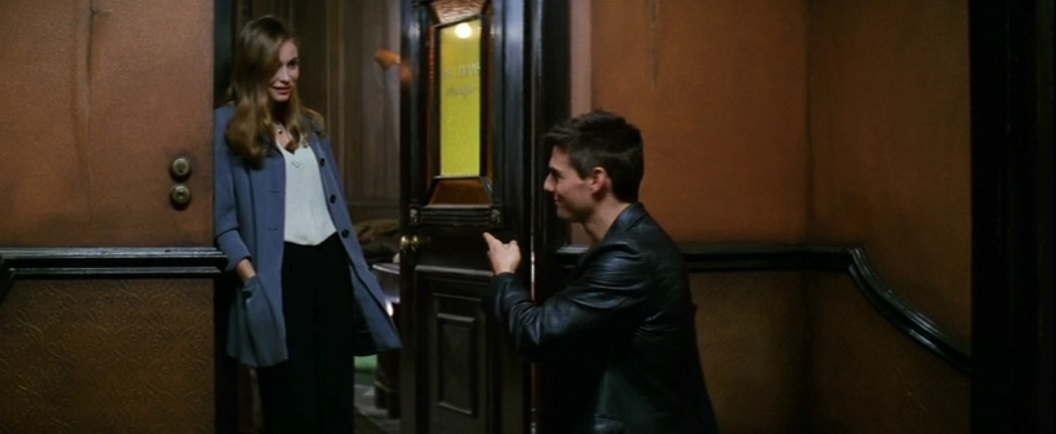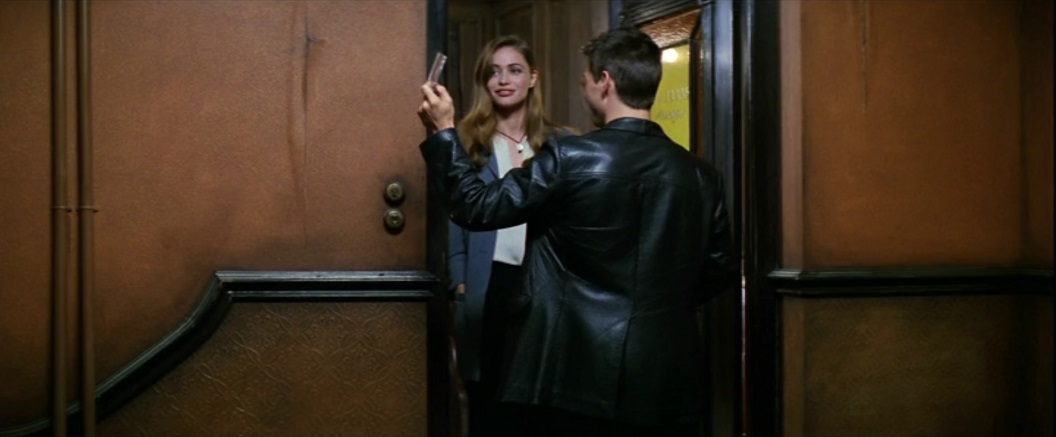SIGHT & SOUND REVISITS JOSE ARROYO'S 'MISSION: IMPOSSIBLE' ESSAY FROM ITS JULY 1996 ISSUE

The other day, Sight & Sound posted an article from its archive headlined, "Mission: Impossible – a popcorn movie to take seriously". The article by José Arroyo was introduced this way: "Brian De Palma’s spy series opener was, argued this feature in our July 1996 issue, 'glamorous, exciting, sexy and sometimes witty.' Mission: accomplished." Here's an excerpt:
Applying the Frankfurt School’s critique of mass culture to this type of filmmaking would not be hard: Mission: Impossible is not very original; the structure of the whole doesn’t depend on details; it respects conventional norms of what constitutes intelligibility in contemporary filmmaking. It could be seen as an example of pseudo-individuation, that which seems different but is in fact the same, whose object is to affirm capitalist culture – Popcorn laced with discourses that propagate and sustain existing relations of power, lulling its audience into believing that they live in the best of all possible worlds. This type of criticism has often been levelled against Hollywood cinema. But though productive as part of a critique, it’s a dead end when it results in mere dismissal.The film also offers a pretty dystopic view of contemporary Western culture. There is no longer any difference between the East and the West. What happens in Kiev and Prague or Washington and London is similar. All are corrupt places with citizens under continuous surveillance. Government, which is supposed to protect, throws out morality, ethics, justice and law to get what it wants, going as far as attempting to kill an honest Cruise, who is simply and desperately trying to do the right thing. Family is far away, ineffectual, vulnerable. Friends are unreliable: they may have killed your other friends, and may yet kill you. Love, as personified by Emmanuelle Béart, is a source of longing, an object of desire (seemingly always deferred) and an instrument of betrayal (the femmes are pretty fatal here – and structurally subordinate in the narrative, as is Hunt’s Black sidekick, played by Ving Rhames; plus ça change…). The worst enemies of Western culture are the ‘Third World’ and terrorists. The worst thing that can happen to an individual is to be ‘disavowed’, to be cut off from one’s corporate community; to survive the hero must remain monadic. It’s a bleak view. The film’s utopia is a masculinist fantasy: that if one is Tom Cruise, all such problems will eventually be resolved.
This is a reading of the film that appears to give it a degree of depth. But to look at Mission: Impossible only in this way is perhaps to miss what is most interesting about it. It’s built around set-pieces (the interrogation scene in Kiev; the Embassy scene; the aquarium scene and the Hotel Europa scene in Prague; the burglary at Langley, Virginia; and finally the train scene, which begins in London) each involving some element of action and ingenuity (from characters or filmmakers). These scenes are woven through the film like songs and dances are in an old-fashioned musical: it isn’t so much that they don’t tell us anything about the characters, but that their function as spectacle exceeds their function as narrative. For exampIe, though we may need to know that Cruise’s colleagues are killed at the start, we don’t need to see it in such detail or to such effect to follow the story. Mission: Impossible is a star vehicle structured around a protagonist: but it is not important to know much about Ethan Hunt, the character Cruise plays. What’s important is how Cruise the star looks, smiles, jumps, leaps, outwits. In such movies, the star functions less as character than as an integral production value. Tom Cruise as ‘Tom Cruise’ in Mission: Impossible is its own kind of spectacle (as when he takes off his mask and is revealed to be ‘Tom Cruise’ during his star entrance at the film’s beginning); what’s more, it’s an integral part of the spectacle presented during the more elaborate action scenes (as when the wind buffets his body on top of the train in the final scene).
Like the musical using the order of musical numbers to create changes of pace and variation, Mission: Impossible tries to vary its own set-pieces in terms of length, tone and desired effect: the scene at the Hotel is medium-length and meant to be exciting; the scene in Langley where Cruise steals the diskette is long and meant to be funny and suspenseful; the scene where Cruise makes the diskette disappear in order to con Krieger (Jean Reno) is meant to be ingenious. The last action scene, the lollapalooza, is to function as the showstopper. It begins with a blast from Lalo Schifrin’s energetic television theme-tune, and reprises all previous effects (it has excitement, speed, suspense, humour and ingenuity), but faster, with more intensity and at a higher pitch.
And like the musical, much of the beauty of and meaning in Mission: Impossible comes from the expressive use of non-representational signs: colour, music, movement.
The scene at Langley where Cruise and company download the names of undercover agents into a diskette is a good example of the pleasures on offer. While Rhames hacks away at the security with his computer, Beart, Cruise and Reno disguise themselves as firemen to get into the building. Beart injects the coffee of the computer worker with a serum to force him to go to the bathroom, and plants a bug on his jacket so that his movements can be traced. In the meantime, Cruise and Reno have managed to get to the room via an airvent. So far, so familiar: this is reminiscent of the pleasures of James Bond, with gadgets, wit and a few punches thrown. As the scene proceeds, maintaining the humorous tone, a shift registers. Will the computer operator return too soon, intercepting Cruise stealing the diskette? Cruise is hung from the ceiling with wires, handled by Reno. We see a rat waddling next to Reno. Will this cause him to lose control? Will the sneeze he’s been controlling simply erupt, setting off the alarm? De Palma is a brilliant student of Hitchcock: these bits are funny and suspenseful.
And Reno does lose control. Cruise, previously floating downwards, now drops abruptly to only inches from the floor. He’s hung from wires, waving his arms as balance, to avoid touching the floor: thus the film offers us the pleasure of Cruise’s physique, his physical prowess. But his body is also reduced to a graphic element of the composition, albeit a gorgeous one: for example, in the high-angle shot which shows us Cruise (dressed in black) against a white floor crossed with thin black lines. His body seems two-dimensional; it seems to disappear into the pattern as if matter had dissolved into geometry.
Two separate moments make this scene thrilling: a drop of sweat about to hit the floor and Reno’s knife falling to the floor. Both are exciting only because of their context (if either lands, this could ruin the mission). They involve quick cuts, to enhance the sense of danger and to give an impression of movement. But they also involve the use of slow motion, to arrest and break down movement.
The combined effect is that of the sublime. The slow motion fixes our gaze with awe; the quick cuts rush us headlong into terror. It’s thrilling to watch, but it’s also fascinating because such a technique, so typical of the contemporary action/spectacle film, reduces difference into equivalence while divorcing an object from its properties. Here a drop of sweat and a knife are equally dangerous, one a natural process which does the body good, the other produced by human ingenuity and human labour to cut and harm: moreover, the knife is dangerous not because it can pierce but because it can fall.
We could interpret this by arguing that in the post-modern world, culture is more the source of terrorized amazement than nature; except its awesomeness derives not from God but from humans. But if we think of this at all, we think of it afterwards. Mission: Impossible is so thrilling that even hermeneutics are left behind, for a while. On the ride, the viewer is too busy rushing through its aesthetics to think of anything but its erotics. Mission: Impossible is a delight because in pleasing the eye and kicking the viscera, it continually asks the audience to wonder, How did they do that? And that the film does this, and how it does it, is at least as important as why, or what it all may mean.




